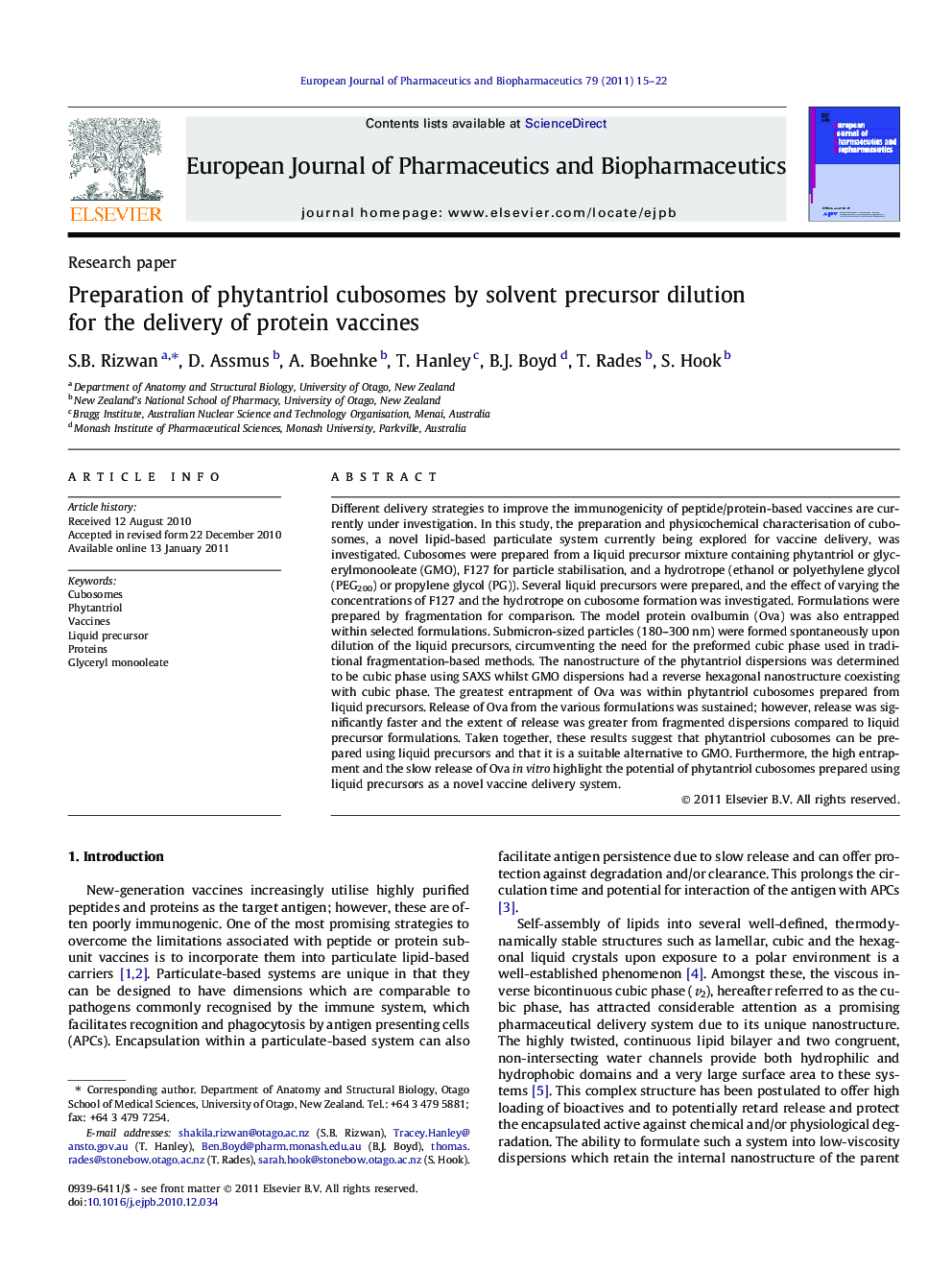| Article ID | Journal | Published Year | Pages | File Type |
|---|---|---|---|---|
| 2085433 | European Journal of Pharmaceutics and Biopharmaceutics | 2011 | 8 Pages |
Different delivery strategies to improve the immunogenicity of peptide/protein-based vaccines are currently under investigation. In this study, the preparation and physicochemical characterisation of cubosomes, a novel lipid-based particulate system currently being explored for vaccine delivery, was investigated. Cubosomes were prepared from a liquid precursor mixture containing phytantriol or glycerylmonooleate (GMO), F127 for particle stabilisation, and a hydrotrope (ethanol or polyethylene glycol (PEG200) or propylene glycol (PG)). Several liquid precursors were prepared, and the effect of varying the concentrations of F127 and the hydrotrope on cubosome formation was investigated. Formulations were prepared by fragmentation for comparison. The model protein ovalbumin (Ova) was also entrapped within selected formulations. Submicron-sized particles (180–300 nm) were formed spontaneously upon dilution of the liquid precursors, circumventing the need for the preformed cubic phase used in traditional fragmentation-based methods. The nanostructure of the phytantriol dispersions was determined to be cubic phase using SAXS whilst GMO dispersions had a reverse hexagonal nanostructure coexisting with cubic phase. The greatest entrapment of Ova was within phytantriol cubosomes prepared from liquid precursors. Release of Ova from the various formulations was sustained; however, release was significantly faster and the extent of release was greater from fragmented dispersions compared to liquid precursor formulations. Taken together, these results suggest that phytantriol cubosomes can be prepared using liquid precursors and that it is a suitable alternative to GMO. Furthermore, the high entrapment and the slow release of Ova in vitro highlight the potential of phytantriol cubosomes prepared using liquid precursors as a novel vaccine delivery system.
Graphical abstractCubosomes are traditionally prepared using fragmentation. However, this approach may not be practical for scale up and can lead to degradation of labile actives. Here we describe a simple process whereby a liquid precursor mixture consisting of the liquid crystal forming lipid (phytantriol), the polymer (F127) and a hydrotrope (propyleneglycol) when diluted in water and with vortex mixing result in the formation of cubic nanoparticles within the submicron size range. Furthermore, fluorescently labelled ovalbumin can be encapsulated efficiently within the cubosome particles.Figure optionsDownload full-size imageDownload as PowerPoint slide
